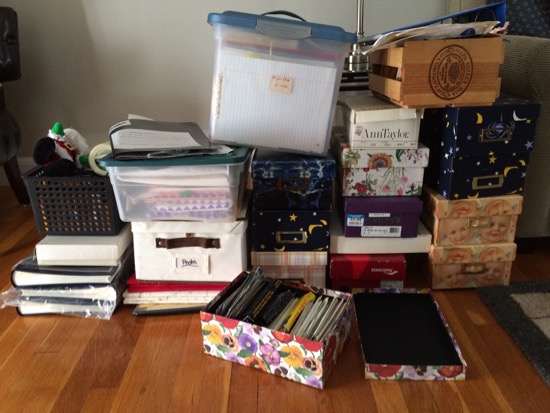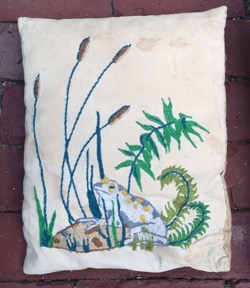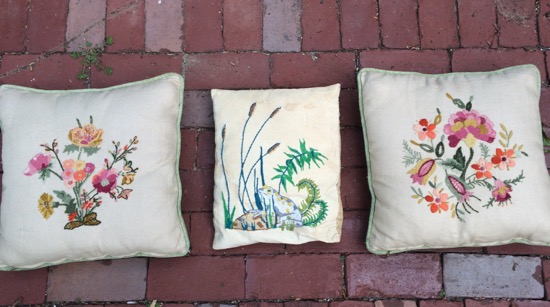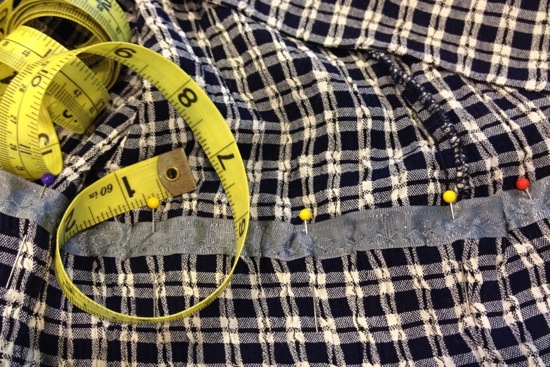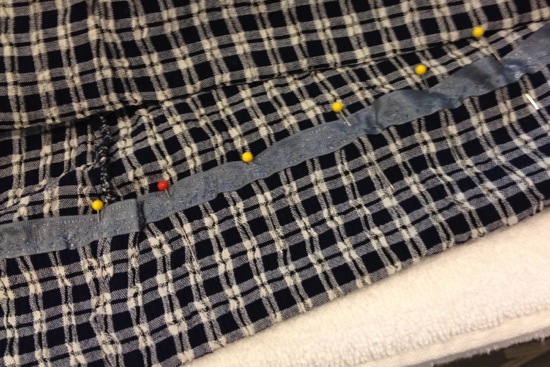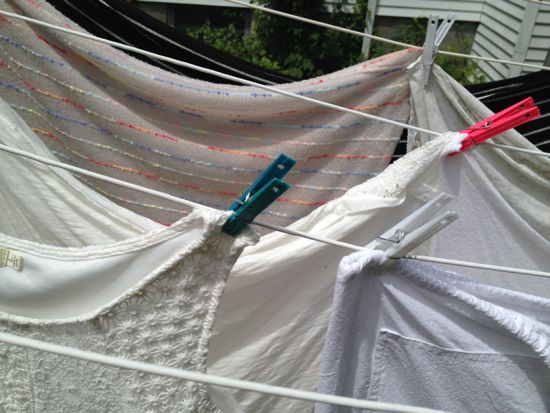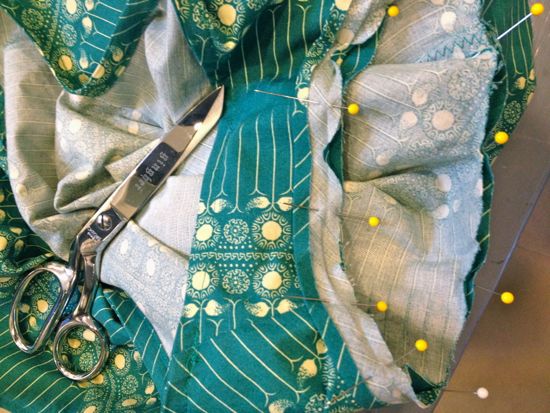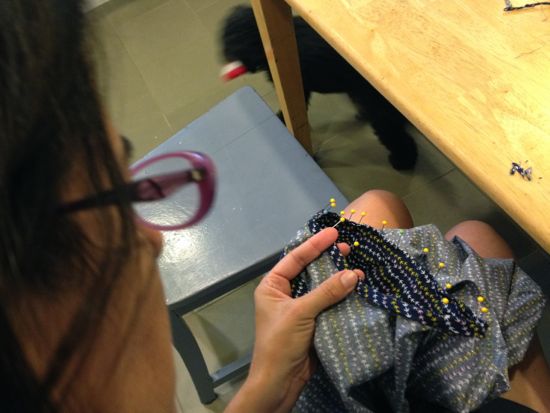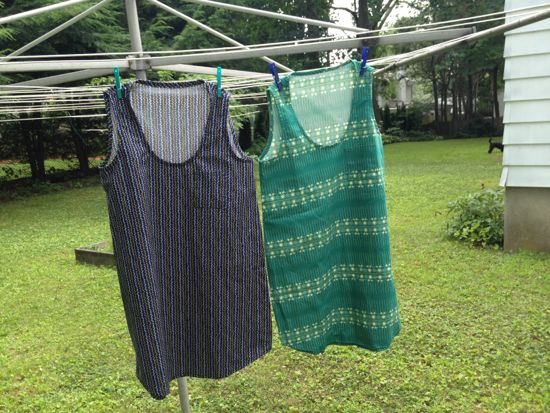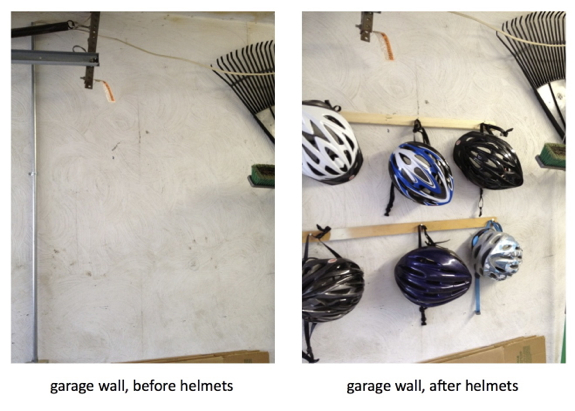When I was a child, every spring in anticipation of Memorial Day we would go to the cemetery to visit the graves of my mother’s father and sisters. My parents tidied up around the headstone and planted new flowers, like petunias and geraniums. There was one job I liked to help with, using the grass shears to trim the overgrown grass that was too close to the headstone for the lawnmower to mow. I liked how the shears worked: you squeezed the handles vertically so that the scissors would open horizontally. The task satisfied my desire to make things neat, even then.

Full inventory of Columbine in quart-sized pots; I bought one
Otherwise, my siblings and I would go up and down the rows calling out the names and doing the arithmetic to figure out how old someone was when he died: “Nineteen seventy minus nineteen twenty one. That’s…. forty nine!” This one, very old. This row, all soldiers, young. My mother’s sisters, just girls. From far away across rows my parents would yell: “Don’t climb on the headstones!” These were not good manners, we knew, yet we were children and it was hard to resist climbing.
Today I went with Grace to the Walnut Hills Cemetery in Brookline, where Jimmy’s remains are buried. In the trunk of the car were hand shovels and a Columbine, two pots of ground cover, and several geraniums and New Guinea impatiens. There was a watering can, too.
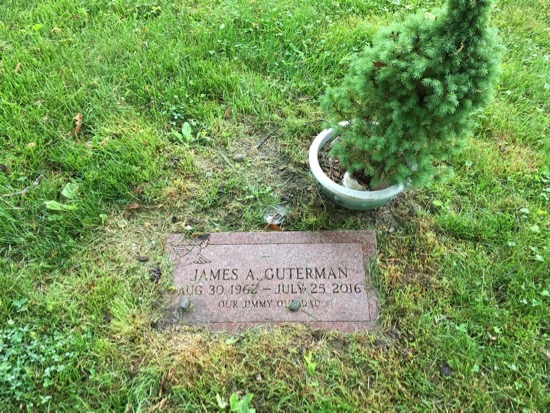
Almost bare but for an evergreen left by an anonymous mourner
In the car on the way there I said to Grace, “I didn’t buy mulch. It only comes in those huge bags, and we don’t need a lot.” She seemed pretty cheerful, so I added, “Yesterday when I was at Home Depot in the garden center, I thought that at the register they should sell ‘cemetery kits’ for people like us: a few plants, a shovel, and maybe a two-pound bag of mulch.” She didn’t say “great idea!” so I figured not a great idea.
Jimmy’s plot is on Chestnut Ave. When we got to his spot, I noticed that the plot of his nearest neighbor – a woman, Mamie H., died in 2017, born 1960, fifty seven! — was decorated with pots of flowers, some on the ground and some hanging from wrought iron shepherd’s hooks. Suddenly I worried I had not done enough in preparation for this small-sized yet very important gardening project. Is love measured by what or how much we plant or decorate?
Months ago, an anonymous mourner left an evergreen tree in a light blue pot for Jimmy, and it has survived. Today we left it where it was, and we planted our little plants nearby. The ground was hard, and because it had been raining we had to squat. Our ankles and knees ached and we stood periodically to stretch, then we’d squat again and dig at the hard sod. Grace and I had a mere sketch of an idea for where we’d place our flowering plants, and we modified as the perimeter started to fill in.
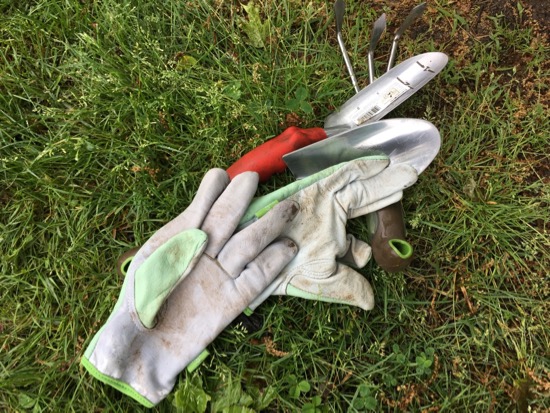
Winston was with us, and at first we leashed him to our parked car because someone in a red SUV pulled up alongside Mamie’s area. I imagined it was Henry H. because his name is also carved on their family grave marker, though with only his year of birth indicated. I imagined he was the person who lavishly placed all the pots of flowers around her resting place, and then I wondered if it might be too much for him to stand nearby, defenseless, seen. So he sat in his car, perhaps praying, perhaps wondering why he was there.
After the imagined Henry H. drove away we let Winston off leash, and like a good child he roamed the grass along the road but never so far away that we couldn’t call him back by name. He seemed happy, or at least frisky.

He gallops off
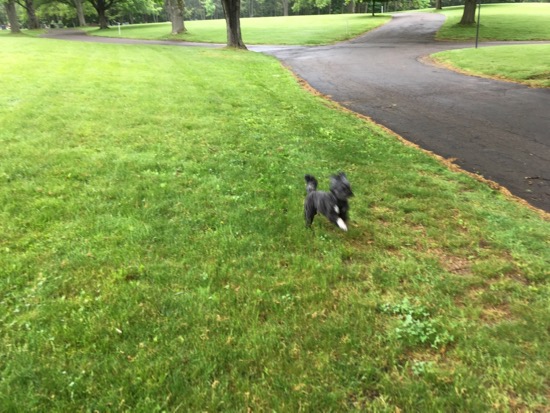
He returns when called
How did I feel? I felt deliberate, if that is even a feeling. Like, this is an important thing to do, and we haven’t done it yet. Finally, we’re ready. I had a sense of ritual: this is an act being performed this weekend across this cemetery, across all the cemeteries in Massachusetts, in the country. The caretaker and grounds crew will make sure the lawn is mowed, the trees tended, and trash removed. It’s up to us to individually mourn and later honor our own people who have died.
We worked quietly; we talked only of the plants, weather, and our aching knees. Grace took her sandals off and put them in the car to stay dry, and I kept my wet sneakers on. It didn’t matter.
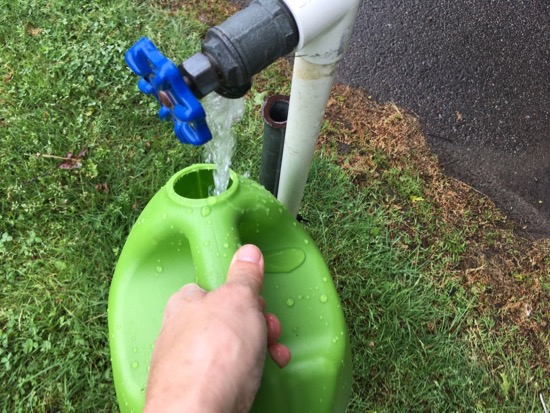
I have drunk from many of these
I filled the watering can from the spigot raised off the ground with a piece of pipe. These cemetery faucets are one of my favorite, simplest things. I considered them magical as a child – water, in the middle of nowhere! – and I still do.
I always noticed, during the annual cemetery visits when I was a child, that my mother did not cry, and even as a child I thought this would be required. People in her family had died, too young and of terrible illnesses, and there she was with her gloves and trowel and perhaps her hair tied back, concentrating and talking to my father.
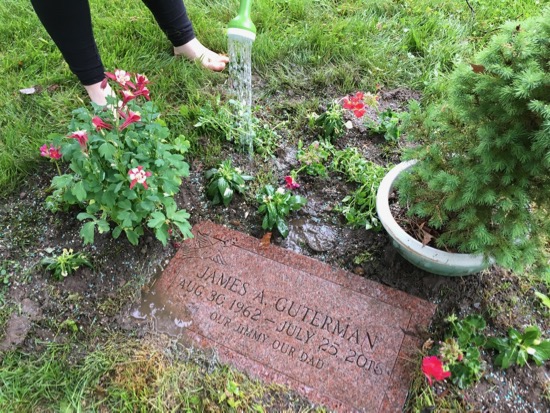
Mulch we needed (and still need)
And today, Grace and I, no young children around us, were also not crying as we tended the ground, planted flowers where there were none, watered them, and replaced the small stones that had been scattered by the mower blades.
Right after Jimmy’s death, when we were making the funeral and burial plans, the children were quite skeptical about a cemetery plot and why we needed one. “There has to be a place to go,” I must have said. I believed that. I also reminded them that Walnut Hills was in our (then) neighborhood, and it was a place we all had strolled through many times. In fact, Lydia and Grace learned to ride their bicycles there. Jimmy or I had taken the dog there daily. “Winston and I will visit,” I assured them. Well, here we are.
This was my idea, the planting of flowers. Perhaps it was motivated by childhood training, that it is right to care for the dead in an active way, perhaps by other feelings that are so strange to me I don’t have a name for them. Last summer, around the first yahrzeit, I could not have planted these flowers: I was weary, and I didn’t want to. Now I want to. That feeling I know.


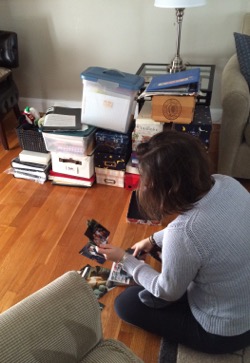 With Lydia, my college-age child whose winter break coincides with mine, I am cleaning out our Little Closet of Horrors. It is a home storage area that makes me shudder and mentally throw up a brick wall of denial every time I open it or think about it. Too many bath towels, three aerobeds (why three?), out-of-use curtains, and boxes and boxes of family photos fill this closet.
With Lydia, my college-age child whose winter break coincides with mine, I am cleaning out our Little Closet of Horrors. It is a home storage area that makes me shudder and mentally throw up a brick wall of denial every time I open it or think about it. Too many bath towels, three aerobeds (why three?), out-of-use curtains, and boxes and boxes of family photos fill this closet.